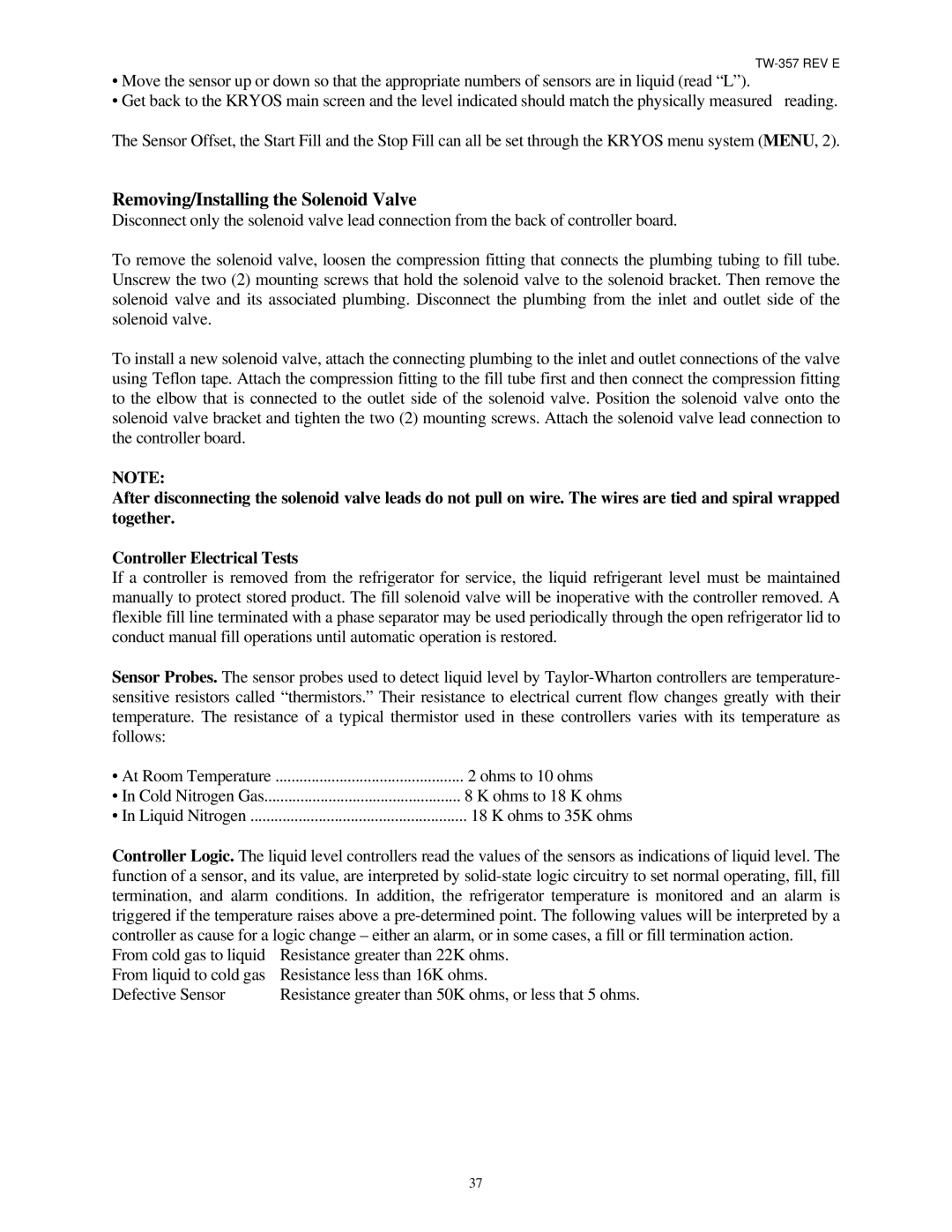TW-357 REV E
• Move the sensor up or down so that the appropriate numbers of sensors are in liquid (read “L”).
• Get back to the KRYOS main screen and the level indicated should match the physically measured reading.
The Sensor Offset, the Start Fill and the Stop Fill can all be set through the KRYOS menu system (MENU, 2).
Removing/Installing the Solenoid Valve
Disconnect only the solenoid valve lead connection from the back of controller board.
To remove the solenoid valve, loosen the compression fitting that connects the plumbing tubing to fill tube. Unscrew the two (2) mounting screws that hold the solenoid valve to the solenoid bracket. Then remove the solenoid valve and its associated plumbing. Disconnect the plumbing from the inlet and outlet side of the solenoid valve.
To install a new solenoid valve, attach the connecting plumbing to the inlet and outlet connections of the valve using Teflon tape. Attach the compression fitting to the fill tube first and then connect the compression fitting to the elbow that is connected to the outlet side of the solenoid valve. Position the solenoid valve onto the solenoid valve bracket and tighten the two (2) mounting screws. Attach the solenoid valve lead connection to the controller board.
NOTE:
After disconnecting the solenoid valve leads do not pull on wire. The wires are tied and spiral wrapped together.
Controller Electrical Tests
If a controller is removed from the refrigerator for service, the liquid refrigerant level must be maintained manually to protect stored product. The fill solenoid valve will be inoperative with the controller removed. A flexible fill line terminated with a phase separator may be used periodically through the open refrigerator lid to conduct manual fill operations until automatic operation is restored.
Sensor Probes. The sensor probes used to detect liquid level by
• At Room Temperature | 2 ohms to 10 ohms |
• In Cold Nitrogen Gas | 8 K ohms to 18 K ohms |
• In Liquid Nitrogen | 18 K ohms to 35K ohms |
Controller Logic. The liquid level controllers read the values of the sensors as indications of liquid level. The function of a sensor, and its value, are interpreted by
From cold gas to liquid | Resistance greater than 22K ohms. |
From liquid to cold gas | Resistance less than 16K ohms. |
Defective Sensor | Resistance greater than 50K ohms, or less that 5 ohms. |
37
